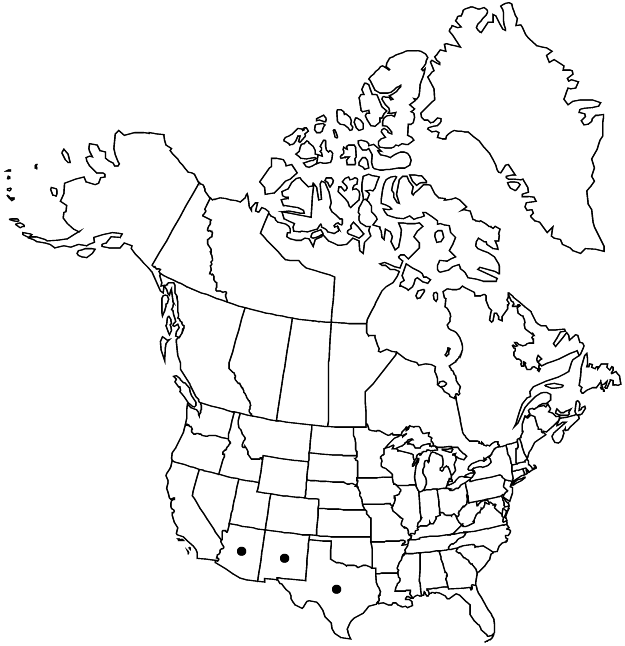Difference between revisions of "Eriogonum jamesii var. undulatum"
Contr. W. Bot. 11: 8. 1903.
FNA>Volume Importer |
FNA>Volume Importer |
||
| Line 11: | Line 11: | ||
|name=Eriogonum undulatum | |name=Eriogonum undulatum | ||
|authority=Bentham | |authority=Bentham | ||
| + | |rank=species | ||
|publication_title=in A. P. de Candolle and A. L. P. P. de Candolle, Prodr. | |publication_title=in A. P. de Candolle and A. L. P. P. de Candolle, Prodr. | ||
|publication_place=14: 7. 1856 | |publication_place=14: 7. 1856 | ||
| Line 17: | Line 18: | ||
|name=Eriogonum jamesii subsp. undulatum | |name=Eriogonum jamesii subsp. undulatum | ||
|authority=(Bentham) S. Stokes | |authority=(Bentham) S. Stokes | ||
| + | |rank=subspecies | ||
}} | }} | ||
|hierarchy=Polygonaceae;Polygonaceae subfam. Eriogonoideae;Eriogonum;Eriogonum subg. Oligogonum;Eriogonum jamesii;Eriogonum jamesii var. undulatum | |hierarchy=Polygonaceae;Polygonaceae subfam. Eriogonoideae;Eriogonum;Eriogonum subg. Oligogonum;Eriogonum jamesii;Eriogonum jamesii var. undulatum | ||
| Line 41: | Line 43: | ||
-->{{#Taxon: | -->{{#Taxon: | ||
name=Eriogonum jamesii var. undulatum | name=Eriogonum jamesii var. undulatum | ||
| − | |||
|authority=(Bentham) S. Stokes ex M. E. Jones | |authority=(Bentham) S. Stokes ex M. E. Jones | ||
|rank=variety | |rank=variety | ||
| Line 56: | Line 57: | ||
|publication year=1903 | |publication year=1903 | ||
|special status= | |special status= | ||
| − | |source xml=https://jpend@bitbucket.org/aafc-mbb/fna-data-curation.git/src/ | + | |source xml=https://jpend@bitbucket.org/aafc-mbb/fna-data-curation.git/src/f50eec43f223ca0e34566be0b046453a0960e173/coarse_grained_fna_xml/V5/V5_756.xml |
|subfamily=Polygonaceae subfam. Eriogonoideae | |subfamily=Polygonaceae subfam. Eriogonoideae | ||
|genus=Eriogonum | |genus=Eriogonum | ||
Revision as of 21:56, 16 December 2019
Subshrubs, loosely matted, 5–15 dm wide. Aerial flowering stems tomentose. Leaf blades 1–2 × 0.3–0.8(–1) cm, densely whitish- to grayish-tomentose abaxially, thinly tomentose to floccose or glabrous and greenish adaxially, margins undulate, frequently crisped. Inflorescences compound-umbellate, branched 2–4 times; bracts usually semileaflike, those of proximal node 0.5–1.5 × 0.2–0.6 cm. Involucres 1.5–4 × 2–3 mm. Flowers 3–5(–6) mm. 2n = 40.
Phenology: Flowering Jul–Oct.
Habitat: Sandy to gravelly or rocky, often limestone flats and slopes, mixed grassland, saltbush, creosote bush, and mesquite communities, oak and conifer woodlands
Elevation: 1600-2900 m
Distribution

Ariz., N.Mex., Tex., Mexico (Chihuahua, Coahuila, Durango, Nuevo León, San Luis Potosí, Tamaulipas, Zacatecas).
Discussion
Variety undulatum, the southern expression of the species, is common in northern Mexico from Hidalgo and Zacatecas northward; there, the plants (called “yerba chuchaca”) are found at elevations up to 3700 m on the higher volcanic peaks. In the southwestern United States, the variety is common only in the Santa Rita Range in southeastern Arizona (Cochise, Gila, and Santa Cruz counties) and the Chisos Mountains of Brewster County, Texas, although it does occur in Hidalgo County, New Mexico. In the flora area, the plants are smallish subshrubs compared to those seen farther to the south. Variety undulatum is worthy of cultivation. The related Mexican endemic Eriogonum turneri Reveal is a low, compact expression known only from gypsum outcrops in Nuevo León.
Selected References
None.